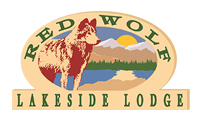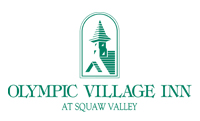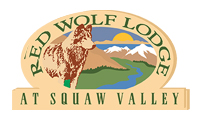Grand Pacific Resorts “1960 Winter Games Celebration” giveaway: Official Rules
NO PURCHASE NECESSARY TO ENTER OR WIN. VOID WHERE PROHIBITED.
1. Eligibility
The Grand Pacific Resorts (“Promotion”) is open only to legal residents of the fifty (50) United States and the District of Columbia who are twenty-one (21) or older at the time of entry. Employees of Sponsors (defined below) and each of their respective related companies, as well as the immediate family (spouse, parents, siblings and children) and household members of each such employee are not eligible. The Promotion is subject to all federal, state and local laws and regulations and is void where prohibited by law.
2. Sponsors
Grand Pacific Resorts, 5900 Pasteur Court, Carlsbad, California 92008
3. Agreement to Official Rules
Participation in the Promotion constitutes your full and unconditional agreement to these Official Rules and the decisions of Sponsors, which are final and binding. Winning a prize is contingent upon fulfilling all requirements set forth herein in a timely manner.
4. Entry Period
The Promotion begins on February 18, 2021, at 9:00 A.M. Pacific Time (“PST”) and ends on February 28, 2021, at 6:00 p.m. PST (the “Entry Period”). Entries received prior to or after the Entry Period will be disqualified.
5. Entry
Submit all required fields on form. A maximum of ONE entry per person per day is accepted. You must sign up by submitting your email or you will not be eligible to win.
6. Selection of Potential Winners
On or about: 2/19/21, 2/20/21, 2/21/21, 2/22/21, 2/23/21, 2/24/21, 2/25/21, 2/26/21, 2/27/21, 2/28/21, 2/29/21, daily and three (3) potential grand prize winners will be selected in a random drawing from among all eligible entries received. Potential winner will be notified by email. If the potential winner cannot be contacted within three (3) days of the first attempt to contact him/her, Sponsors will select an alternate potential winner in his/her place from among all remaining eligible entries.
7. Requirements of Potential Winner
Except where prohibited, the potential Grand Prize Winners must complete and return an affidavit of eligibility and liability/publicity release (the “Affidavit/Release”) within ten (10) days of being notified. If a potential winner fails to sign and return the Affidavit/Release within the required time period, if notification or prize is returned as undeliverable, or if Sponsors determine in their sole discretion that the potential winner is ineligible, an alternate entrant will be selected in his/her place. Winner may be required to provide social security number for tax reporting purposes. Travel companions, over 21 years of age, must sign and return a liability/publicity release prior to travel. If travel companion is a minor, the winner must be his/her parent or legal guardian. Unless prohibited by law, acceptance of a prize constitutes permission for Sponsors to use winner’s name, picture, likeness, address (city and state), and biographical information for advertising and publicity purposes, worldwide, without further compensation.
8. Prizes
One (1) winner from daily entries received 2/18/21 to 2/27/21 will receive one (1) weekday adult 2020-2021 Squaw Valley/Alpine Meadows lift ticket. Prize does not include non-discountable fees, federal, state or local taxes, or any other cost or fee associated with prize receipt or use not expressly stated herein. Approximate retail value of the daily prize is: $99. One (1) winner from entries received 2/18/21 to 2/28/21 will receive a one of three prizes: [Gold]: 3 Nights at any Grand Pacific Resort, plus a $100 Donation made in your name with a year subscription to Ski History magazine, and a Commemorative Postcard and Stamp, approximate retail value of the Gold prize is: $599; [Silver]: Autograph copy of “Squaw Valley & Alpine Meadows: Tales from Two Valleys”, $75 donation in your name, and a Commemorative Postcard and Stamp, approximate retail value of the Silver prize is: $125; [Bronze]: $50 donation in your name, Autograph copy of “Snowball's Chance: The Story of the 1960 Olympic Winter Games”, Commemorative Postcard and Stamp, approximate retail value of the Bronze prize is $100. Odds of winning depend on the number of eligible entries received.
9. General Conditions
In the event that the operation, security or administration of the Promotion is impaired in any way for any reason, Sponsors may, in their sole discretion, suspend, modify and/or cancel the Promotion. Sponsors reserve the right in their sole discretion to disqualify any individual they find to be tampering with the operation of the Promotion or to be acting in violation of these Official Rules or in a disruptive manner. Any attempt by any person to undermine the operation of the Promotion may be a violation of criminal and civil law, and, should such an attempt be made, Sponsors reserve the right to seek damages from any such person to the fullest extent permitted by law. Sponsors’ failure to enforce any term of these Official Rules shall not constitute a waiver of that or any other provision. In the event of a dispute as to any entry, the authorized account holder of the email address used to enter will be deemed to be the entrant. The “authorized account holder” is the natural person assigned an email address by an Internet access provider, online service provider or other organization responsible for assigning email addresses for the domain associated with the submitted address. In the event that an entry is confirmed to have been erroneously deleted, lost or destroyed, entrant’s sole remedy shall be another entry into the Promotion. If any provision of these Official Rules is held to be invalid or unenforceable, such provision shall be struck, and the remaining provisions shall be enforced.
10. Release and Limitation of Liability
By participating in the Promotion, you agree to release and hold harmless Sponsors, their respective parent and related companies, and each such company’s respective officers, directors, employees, and agents (collectively, the “Released Parties”) from and against any claim or cause of action arising out of participation in the Promotion or receipt or use of any prize, including, but not limited to: (a) unauthorized human intervention in the Promotion; (b) technical or printing errors; (c) lost, late, postage-due, misdirected or undeliverable mail or email; (d) errors in the administration of the Promotion or the processing of entries; or (e) injury or damage to persons or property which may be caused, directly or indirectly, in whole or in part, from your participation in the Promotion or receipt or use of any prize. You further agree that in any cause of action, the Released Parties’ liability will be limited to the cost of entering and participating in the Promotion, and in no event shall the Released Parties be liable for attorneys’ fees.
11. Disputes
Except where prohibited, you agree that any and all disputes, claims and causes of action arising out of the Promotion or any prize awarded shall be resolved individually, without resort to any form of class action, and exclusively by the appropriate court located in the State of California. All issues and questions concerning these Official Rules, your rights and obligations, or Sponsors’ rights and obligations shall be governed by the laws of the State of California, without giving effect to any choice of law or conflict of law rules.
12. Privacy
All information submitted to the Sponsors as part of this Promotion will be treated in accordance with the Sponsors’ Privacy Policy, available athttps://grandpacificresorts.com/privacy/
13. Winners
On or about 2/29/21, three (3) potential grand prize winners will be selected in a random drawing from among all eligible entries received. Potential winners will be notified by email.
14. Email Opt-in
By submitting your email address as an entry into this promotion you consent to receive future promotional offers from ResorTime, Grand Pacific Resorts, Red Wolf Lodge at Squaw Valley, Red Wolf Lakeside Lodge, Tahoe Sands Resort, Olympic Village Inn, and The SNOW Sports Museum.





